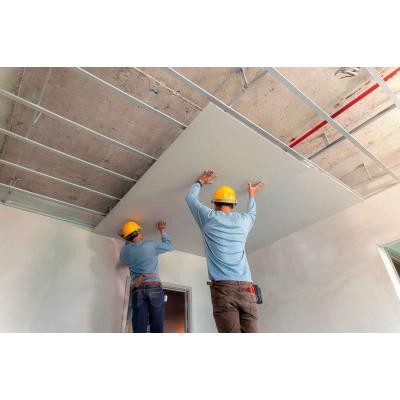
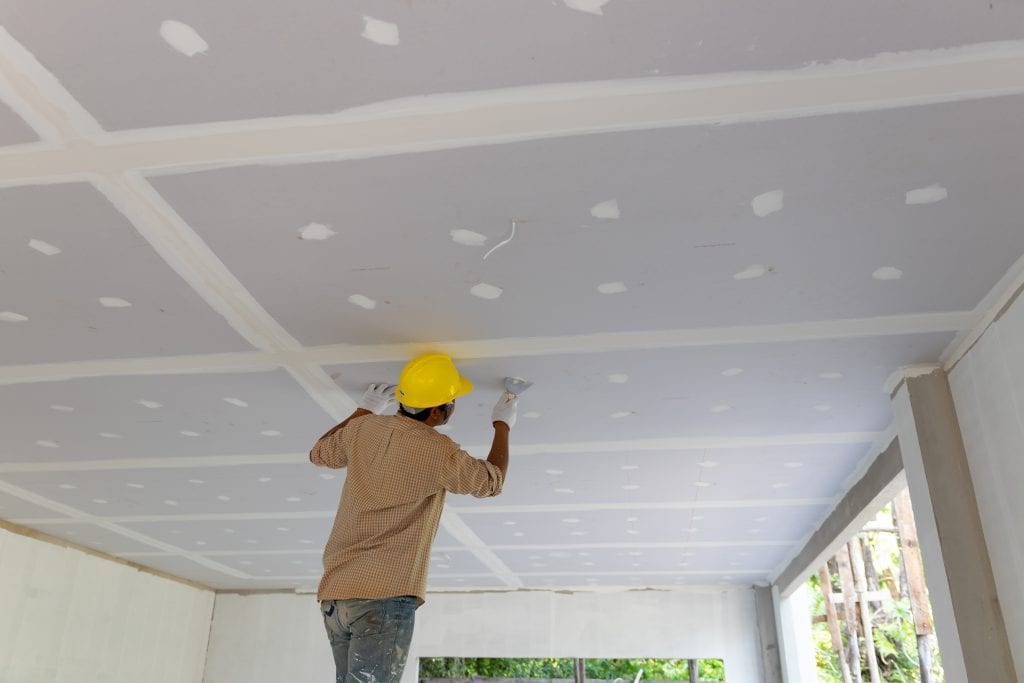
A conventional ceiling construction type is commonly found in homes. These ceilings have a standard drywall finish and are made of lower-cost materials, requiring easy installation.
Conventional ceilings are plain and flat – and are usually between 8 to 9 feet high and can fit with typical construction material sizing.
Although more readily accessible, a room can feel closed-in if the ceilings are too low. Raising the ceiling by a few feet can open up space significantly and even increase a building’s value for resale.
But upgrading conventional ceilings comes with a higher price tag, since it will require the use of materials that are not standard fit. You’ll need to weigh the cost and potential resale value, as well as how important the aesthetic appeal is to you.
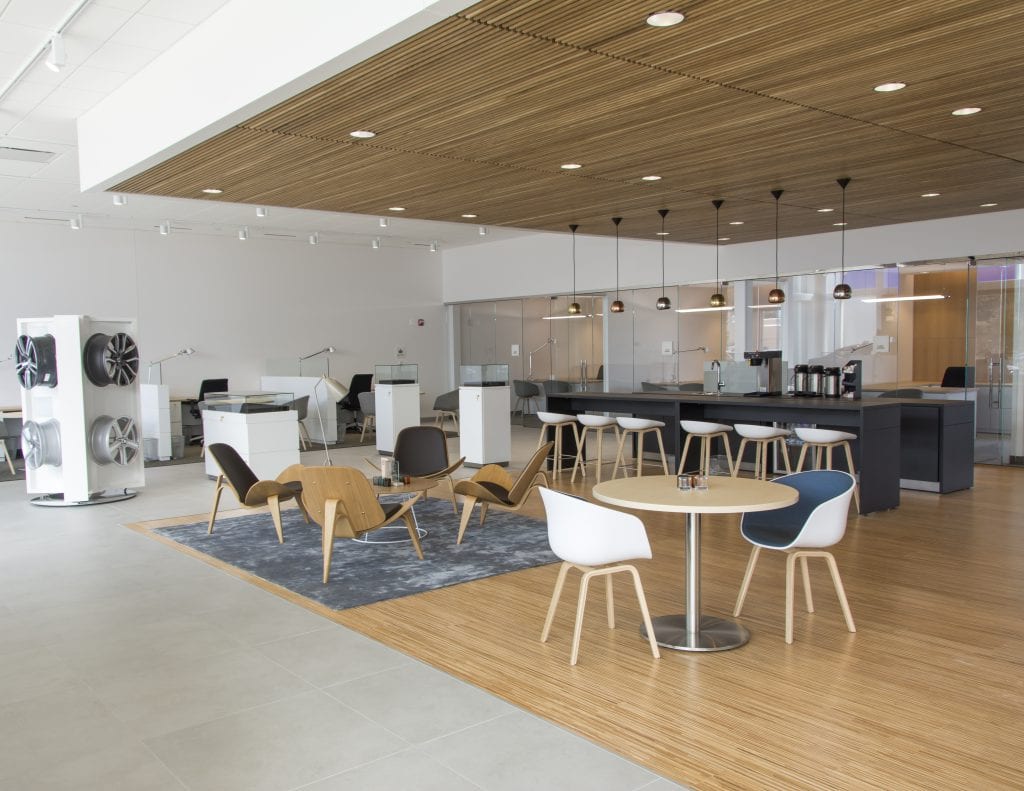
A suspended ceiling (sometimes referred to as a dropped ceiling) hangs from a metal grid below the existing ceiling that is already in place.
Commonly used with noise-regulating acoustic ceiling tiles, these flat drop ceilings allow designers to conceal mechanical, electrical, plumbing, and lighting fixtures (MEP) above the dropped, exposed ceiling, such as pipes and wiring.
This ceiling variety is most commonly used in commercial buildings, offices, and retail spaces, as suspended ceilings give designers remarkable flexibility. Most wood ceilings are suspended using standard commercial T-bar grids and are a cost-effective option.
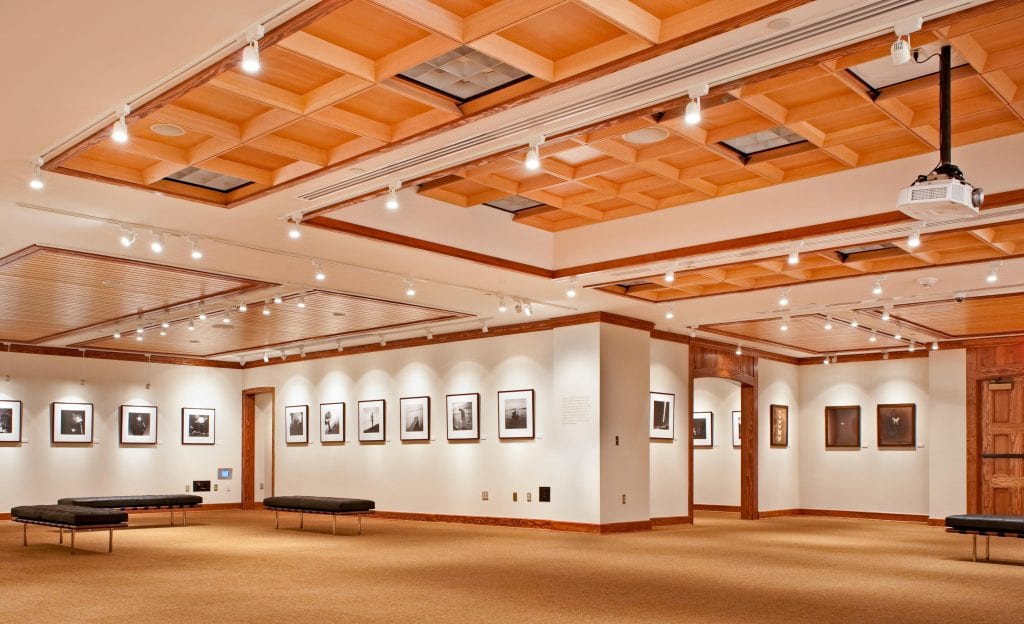
Commonly found in high-end homes, churches, libraries, and hotels, coffered ceilings reflect a classic, even luxurious, aesthetic. A pricier option than conventional options, coffered ceilings require installation by specialists who are familiar with this variety.
Recognizable by its grid of inverted panels that are accentuated by molding, commercial wood coffered ceilings are typically designed to work with standard T-Bar suspension grids – helping to streamline the installation process.
9Wood custom-builds coffers, offering any stain or finish to match your aesthetic needs. If your project is considered retro “historical,” a coffered ceiling might be a good design to consider.
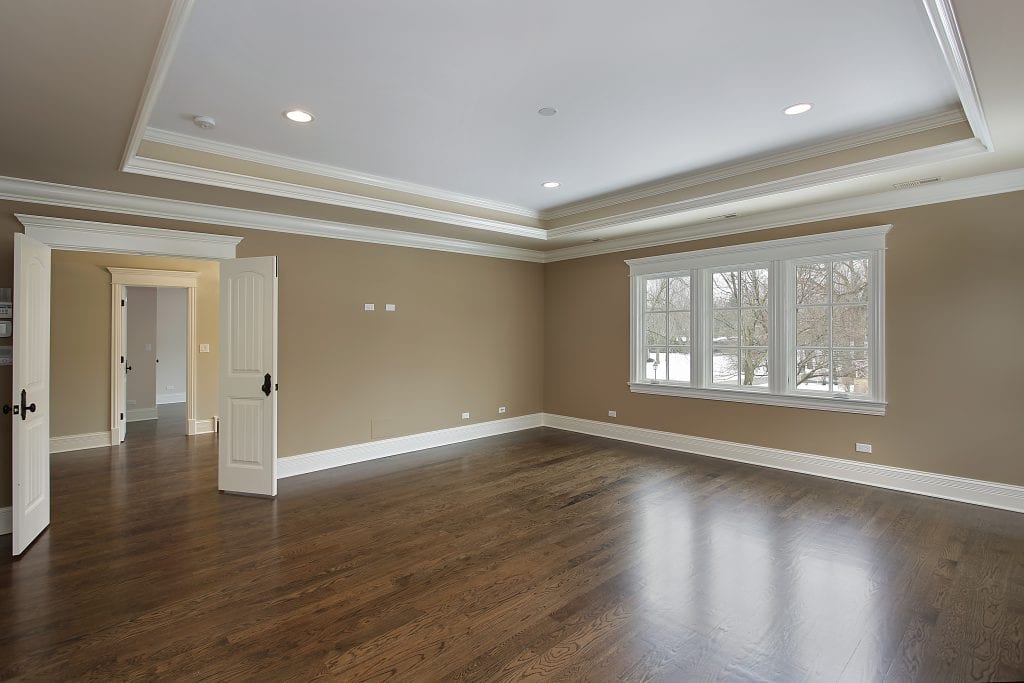
Tray ceilings are multi-level ceilings – they start from one height, then drop as you add levels. As the name suggests, the ceiling layout resembles a tray.
The flat ceiling on the outside of the tray surrounds the raised center, which is the highest part of the ceiling.
Tray ceilings (also known as panned ceilings) become slightly lower with each added step or “level” that surrounds the raised center, creating a three-dimensional effect as the ceiling expands outwards.
These ceilings can add a dramatic effect to a space and also make a room seem taller. Panned ceilings typically have two to three levels, with each level dropping between 5 to 11 inches below the level above. You can add trim or molding as a fascia in between the layers.
When considering a tray ceiling, make sure that the ceiling height is at least 8 feet tall, as dropped borders that go below this height may make a space feel more tight than tall.
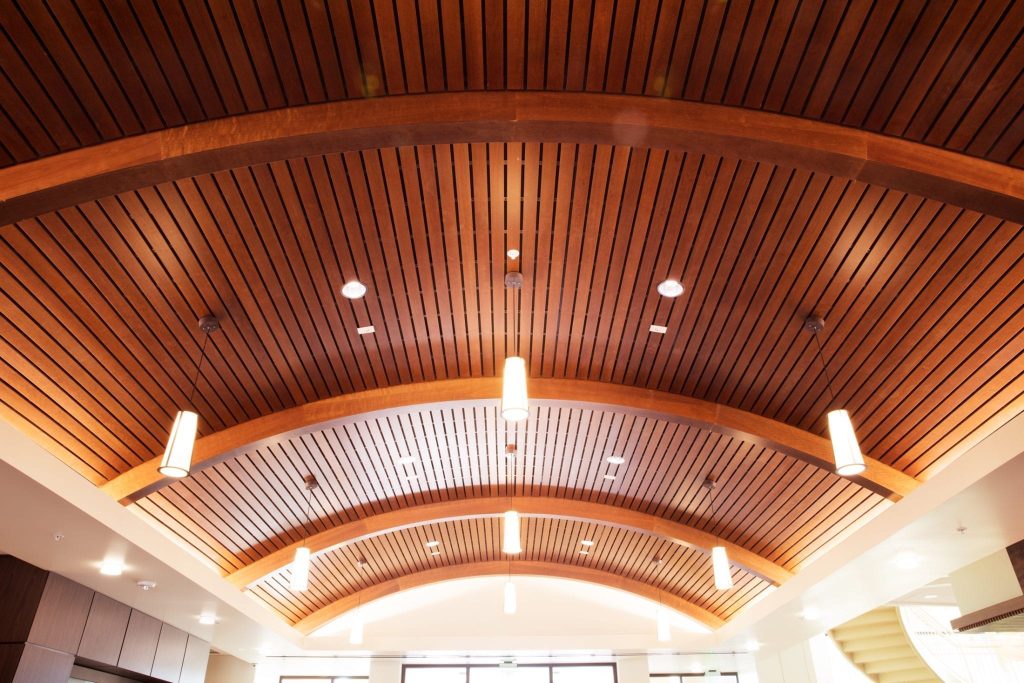
A coved ceiling is typically found in formal rooms, theaters, or churches. The Vatican, for example, houses one of the most famous coved ceilings in the world.
Forming a dome-like design, this concave ceiling has curved edges instead of sharp angles between the ceiling and walls and is often built using curved molding or framing. The coves start from the top of the main wall and extend up to the ceiling itself.
The round look of the dome ceiling makes a room appear softer and gentler. In addition to beautifying formal spaces, this ceiling can also serve as an archway to separate one room from another.
If you’re on a budget, keep in mind that builders will often charge extra to install a coved ceiling due to their intricacy.
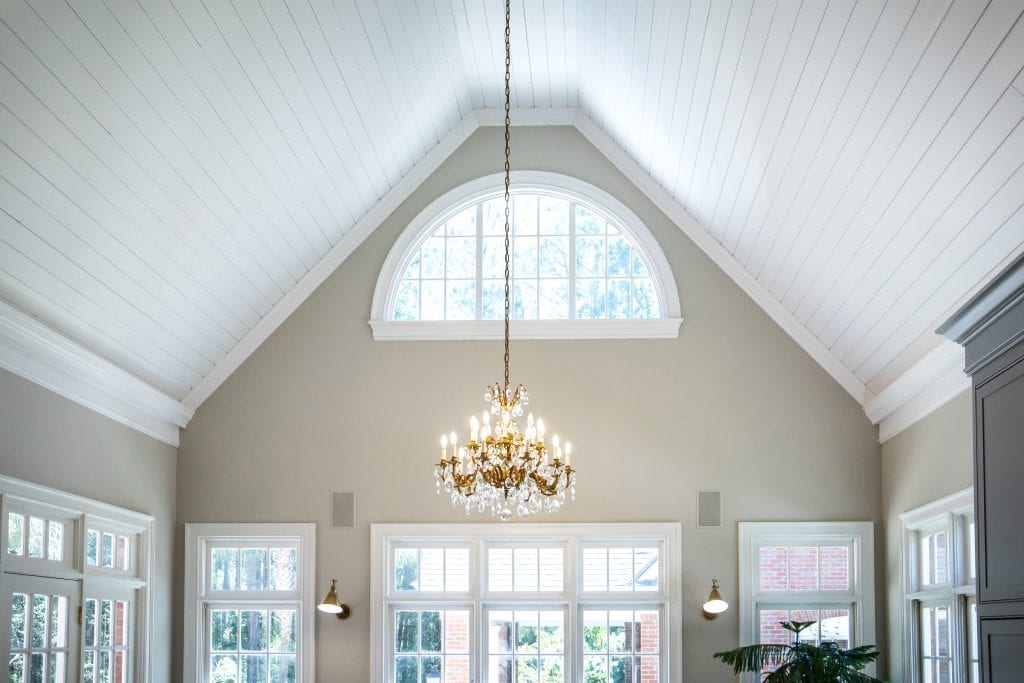
Cathedral ceilings are often found in large living rooms, dining rooms, bedrooms, and even the master bath.
Cathedral – or vaulted – ceilings are known for their inverted V-shape where the tip of the V is the highest point and the sides of the V slope down.
These high ceilings are made from a variety of materials. Linear Wood is a great option to use, whether planks or panels fastened either continuously or progressively.
Although beautiful, they present special challenges for home and building owners, as their steep, sloping structure makes it difficult to paint or reach fixtures. For our clients, architects consider suspension loads and fastening methods to ensure proper installation.
More than that, these ceilings consume a lot of energy and if the angled frame is not wide enough, this will reduce the ventilation in the space. As a natural insulator, using wood for this ceiling variety can help regulate the temperature in your space and reduce energy costs.
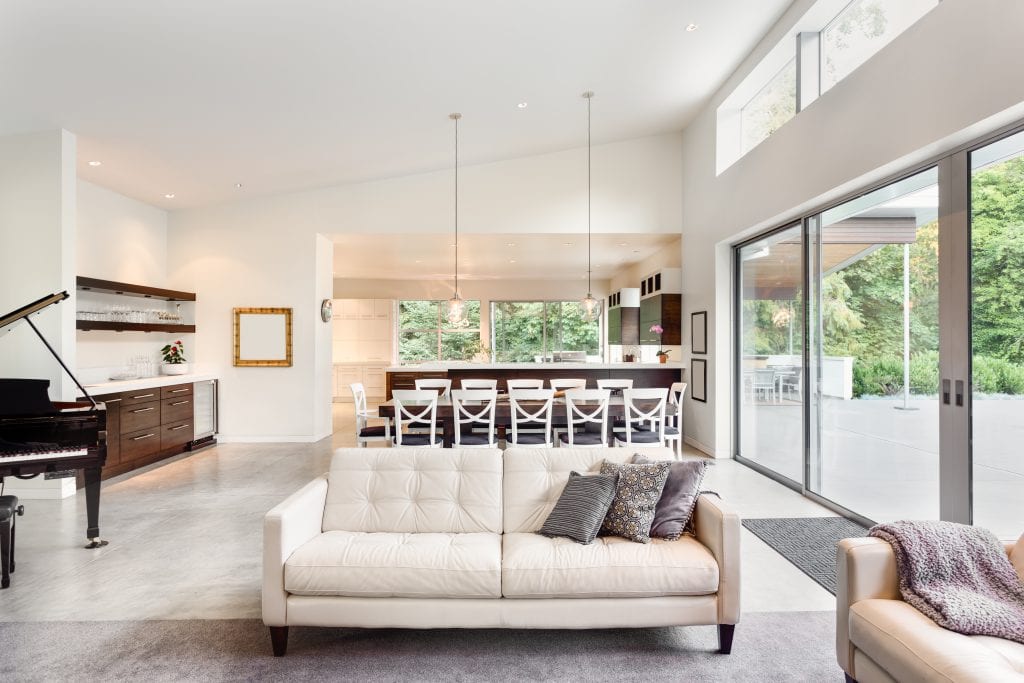
Shed, or single-slope, ceilings are typically found on the top story of a home, either in the attic or loft.
Creating a distinct look for your room, a shed ceiling will begin at a high point at one wall, then slope down toward the opposite wall.
In commercial architecture, the shed ceiling mirrors a shed roof structure. It also offers designers a great deal of flexibility. Wood ceilings can also be suspended on a slope using a standard suspension grid if the main runners are positioned down the slope.
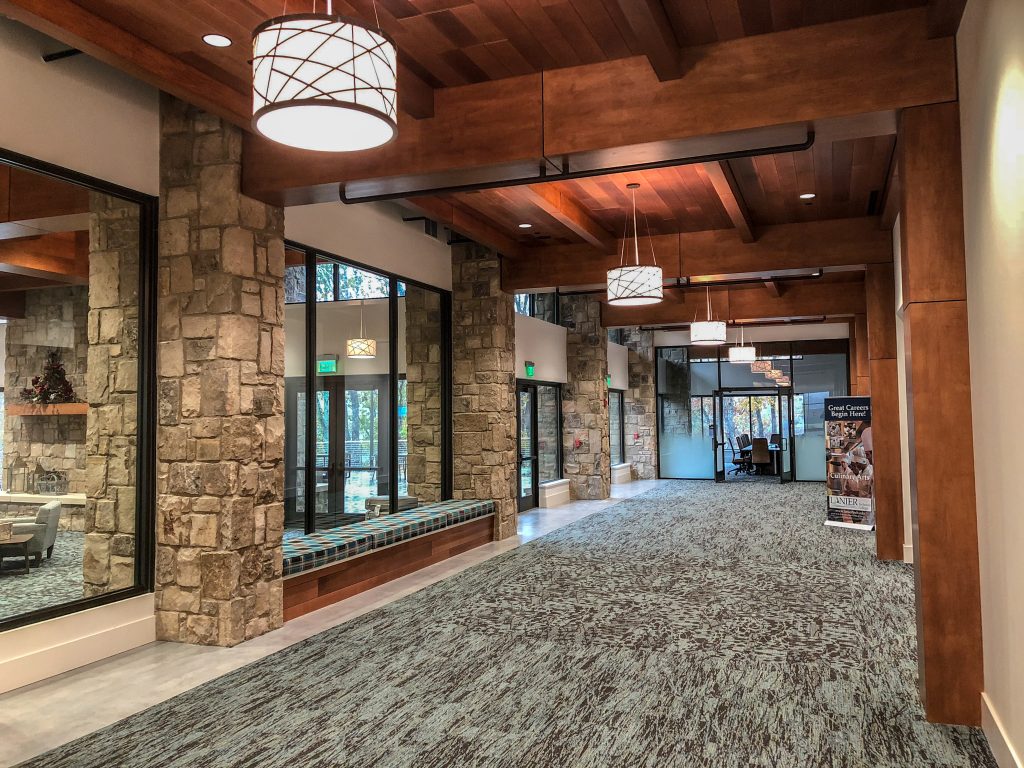
Beam ceilings are typically found in hallways and corridors for commercial settings and living and dining rooms for residential settings.
Though considered as a contemporary style, it’s actually a traditional ceiling form. Made primarily from hardwoods or Douglas fir, beams give homes a classic, rustic look.
When heavier, load-bearing beams are exposed in the interior of the space, the natural wood provides visual variation from the rest of the room. In cases where load-bearing beams are not required, a copy of the beam is created using plywood and miters – and is used simply for its aesthetic appeal.
Beamed ceilings can be made to fit a range of styles. However, these detailed ceilings can overwhelm a smaller room, so be mindful of where you have these ceilings installed.
Using a Commercial Ceiling Expert for Guidance
As the most award-winning ceiling manufacturer in the industry and the only ceiling manufacturer in the Vietnam that works exclusively with wood, STC skilled team of experts will guide you through the different ceiling types to help you find a model that fits your specifications. Our goal is to ensure your design vision becomes a reality.